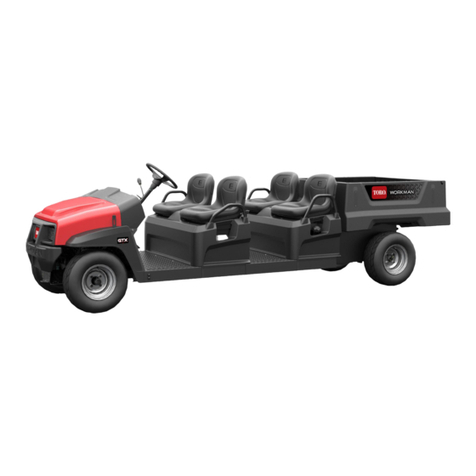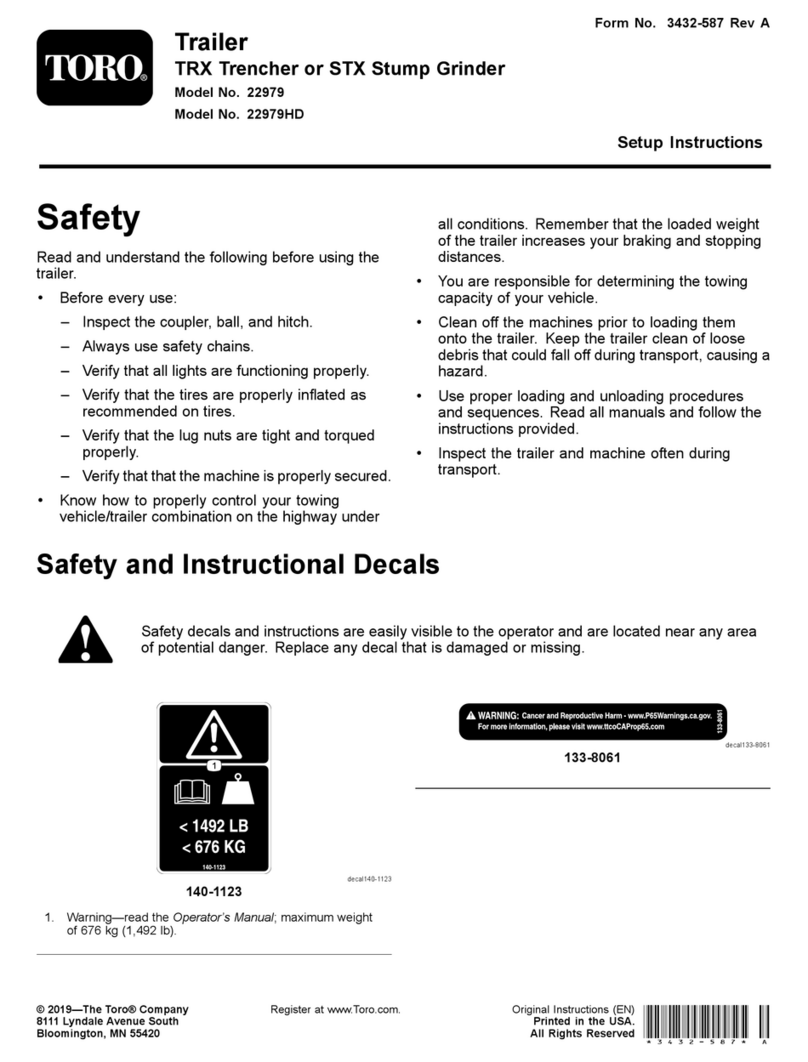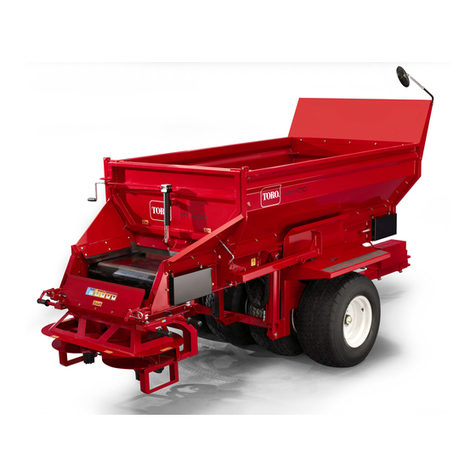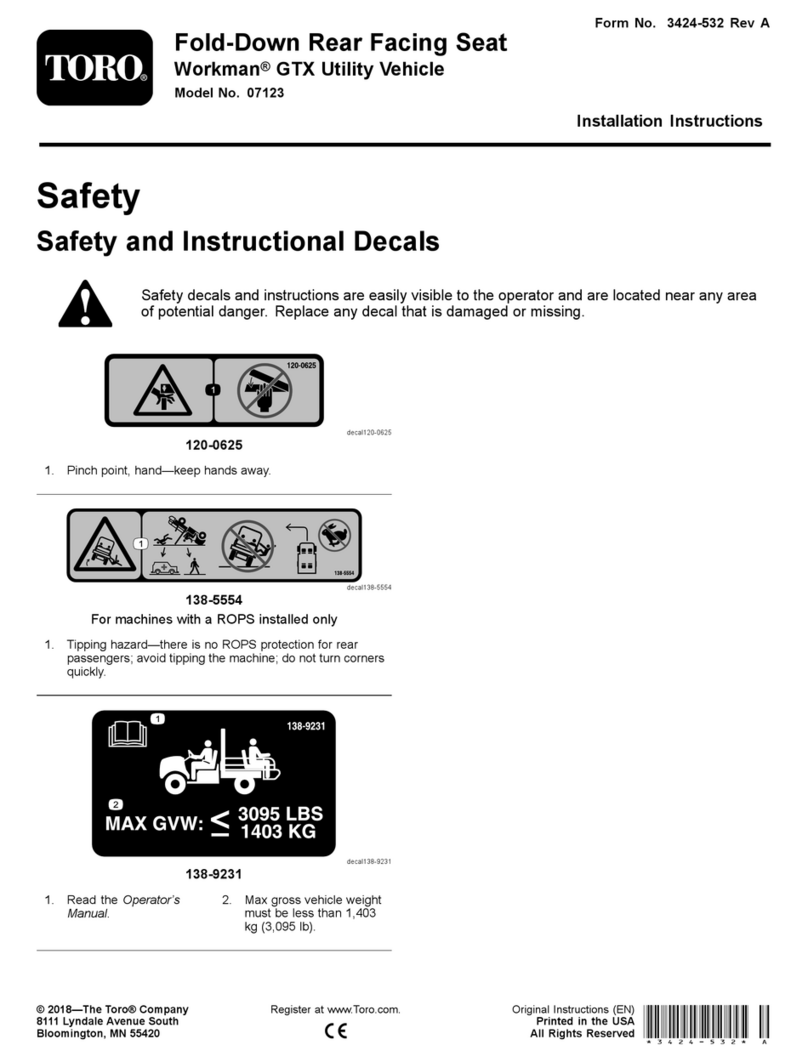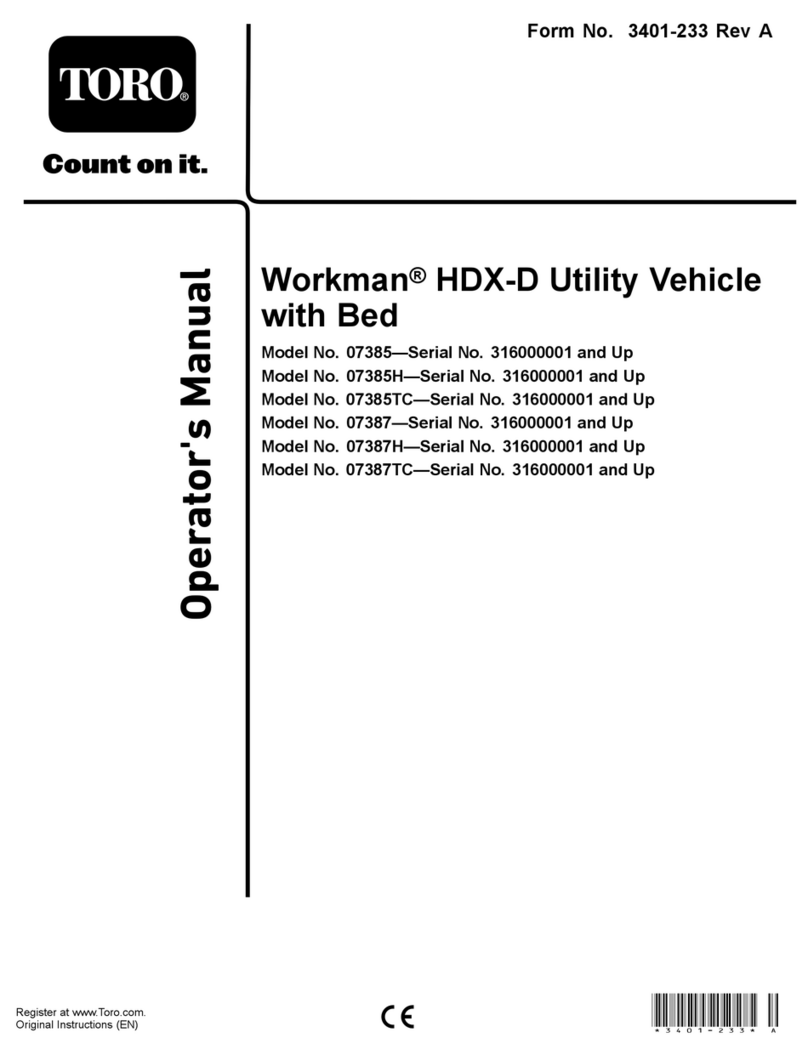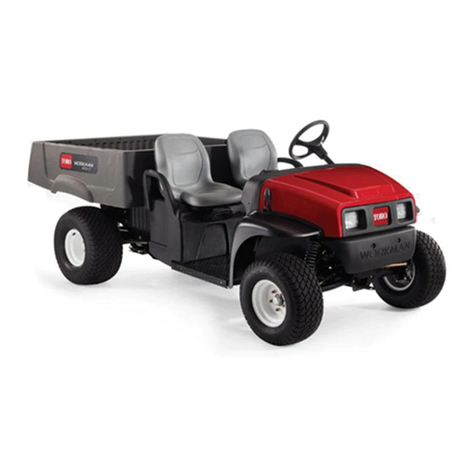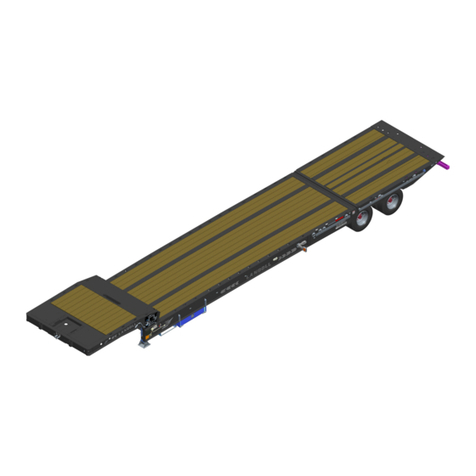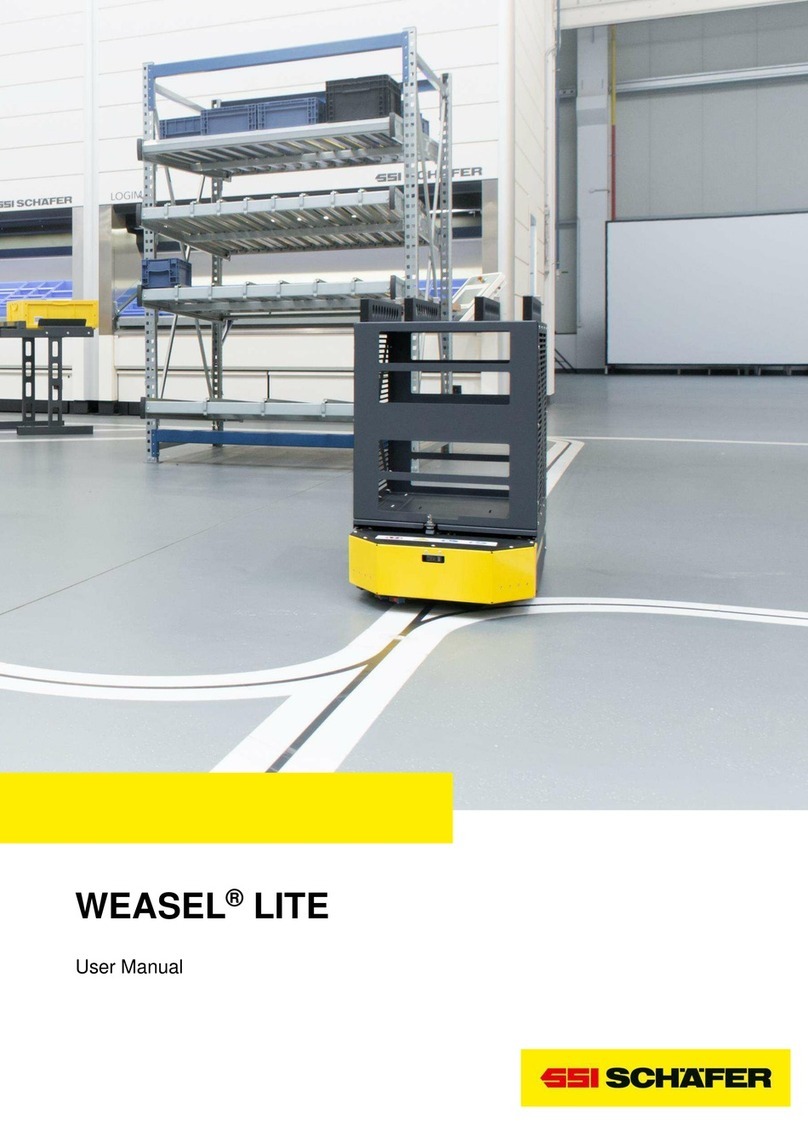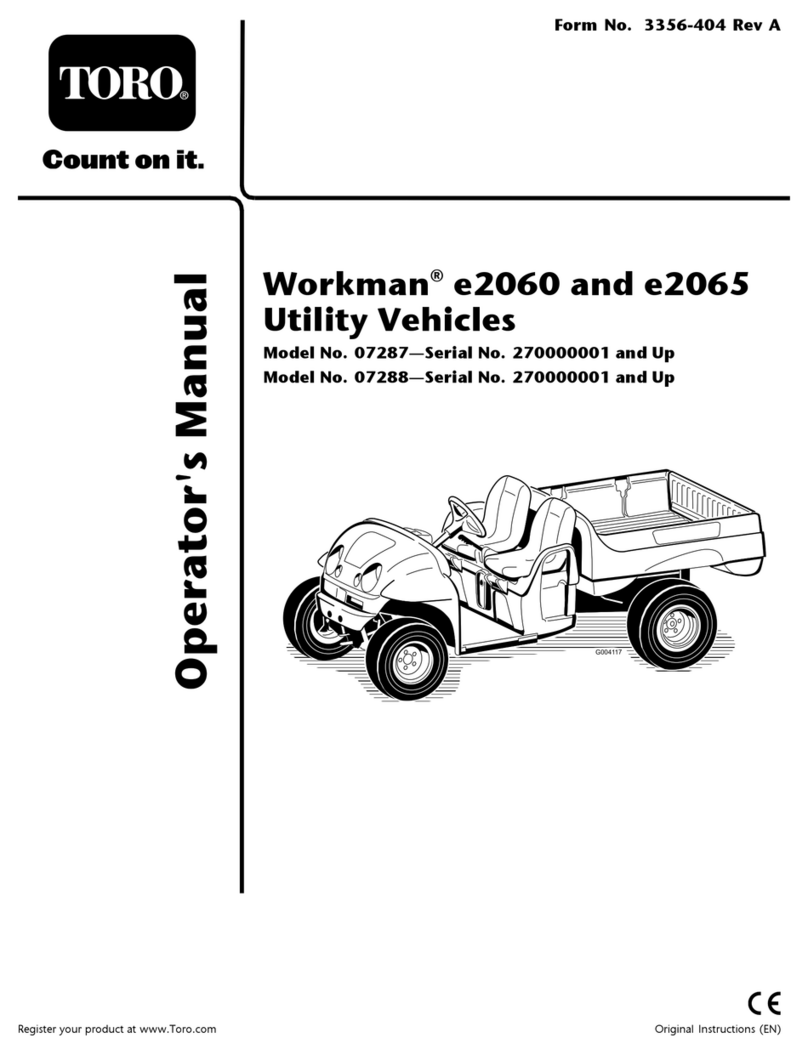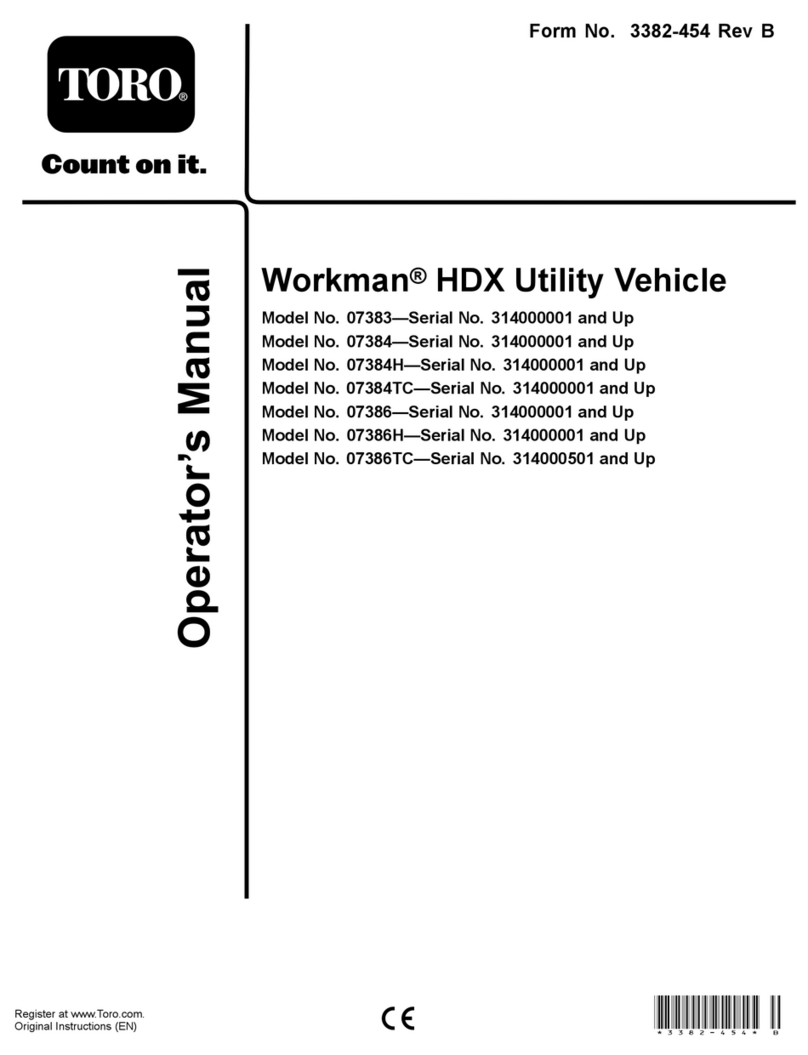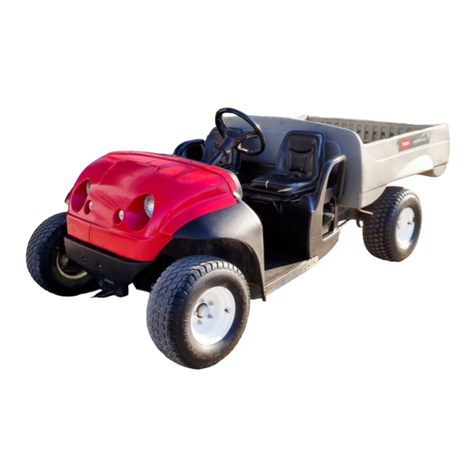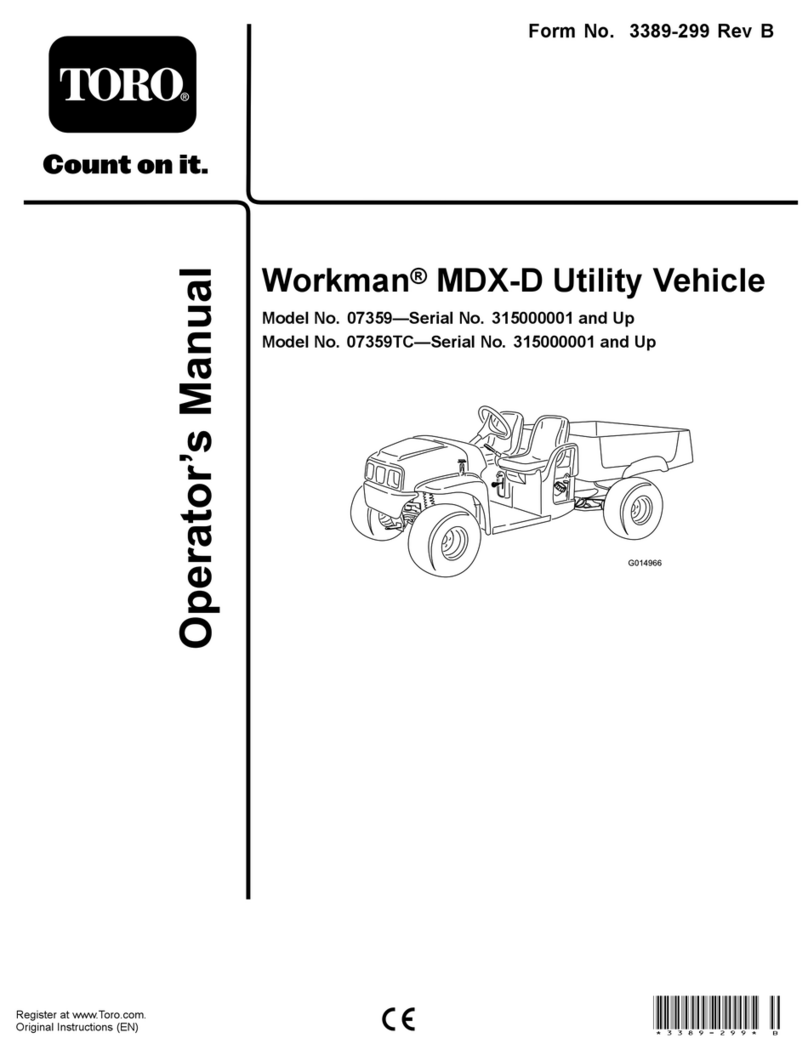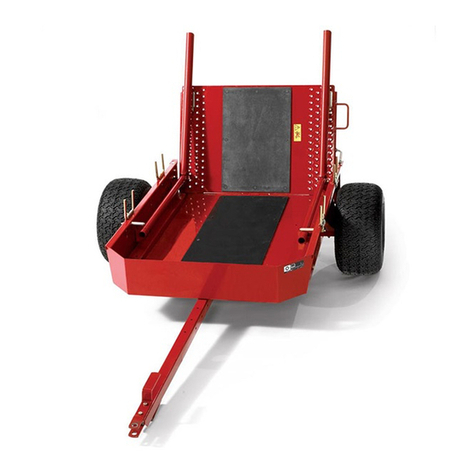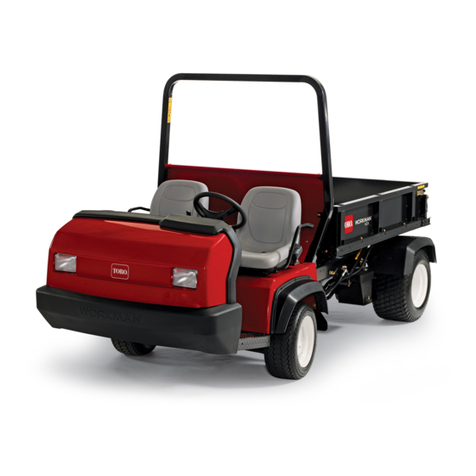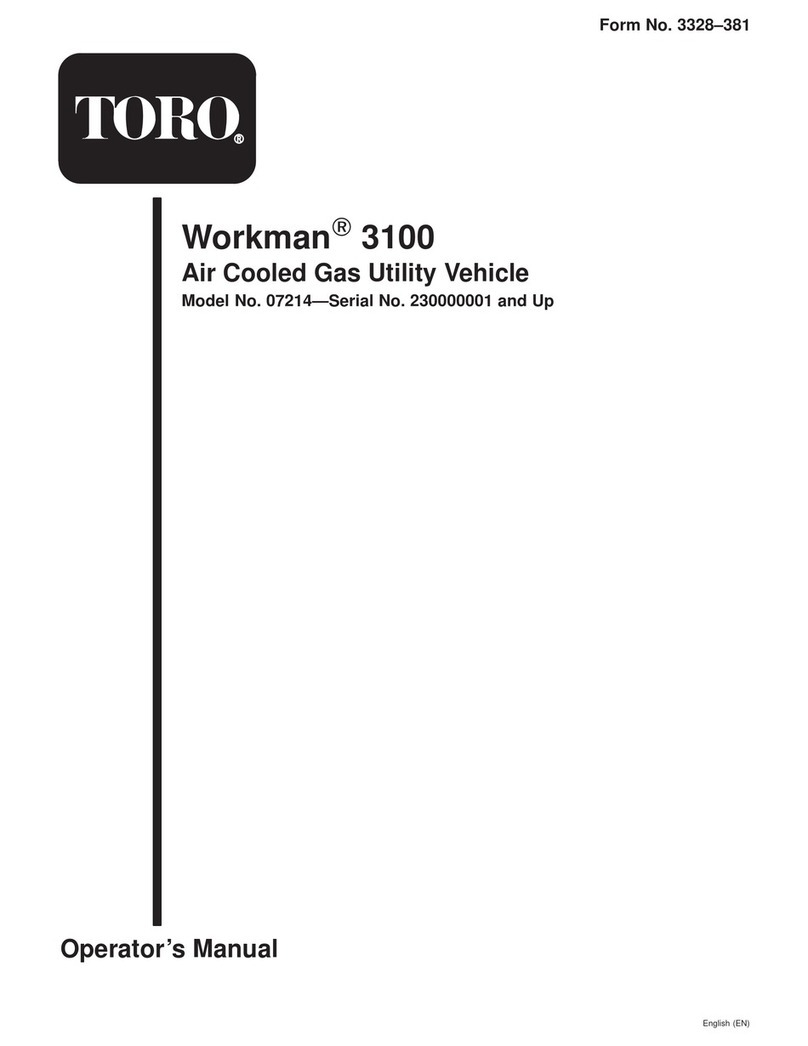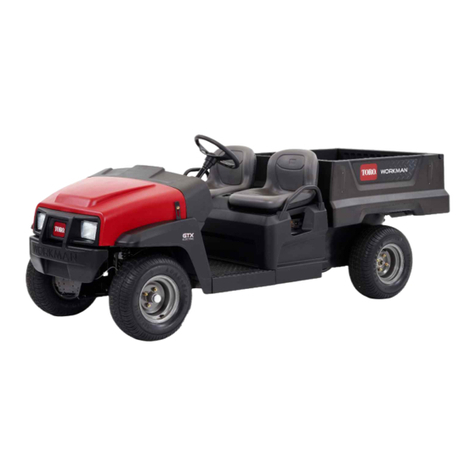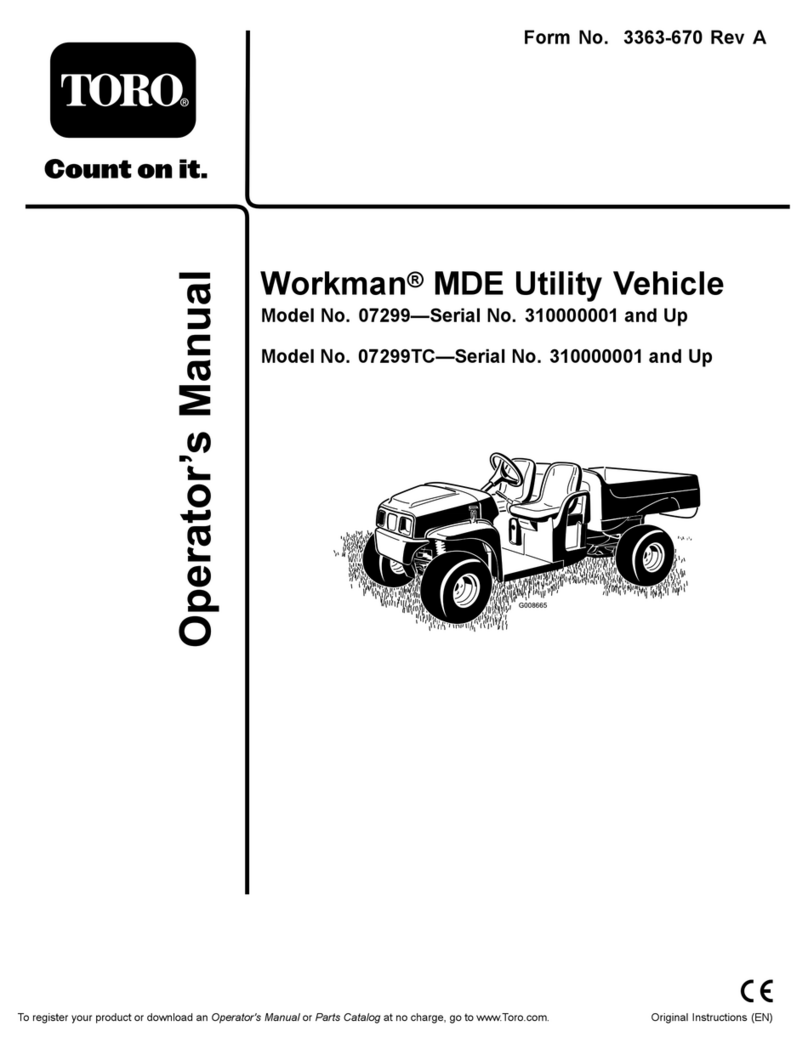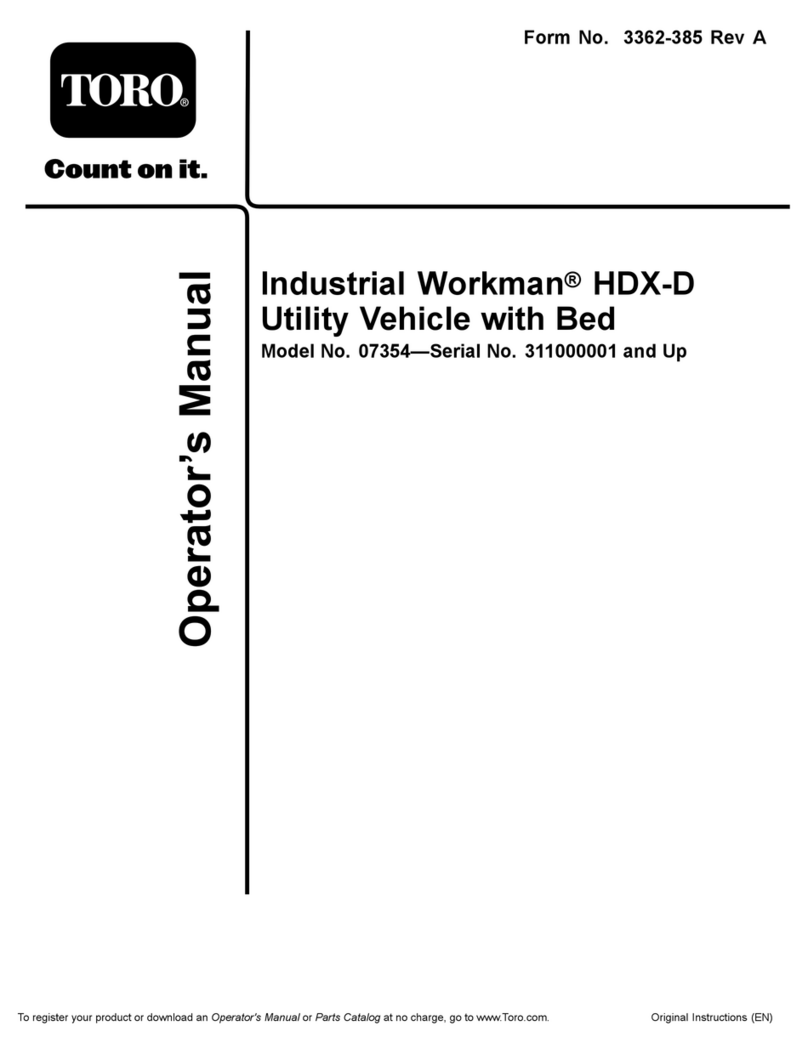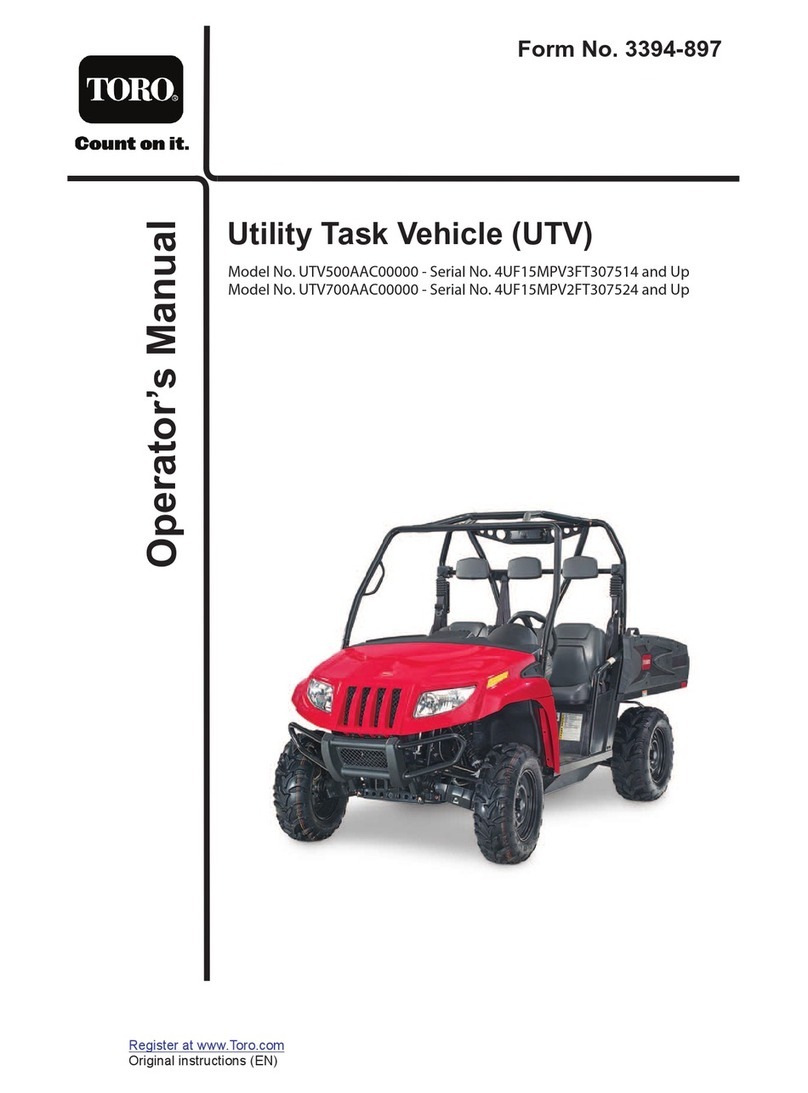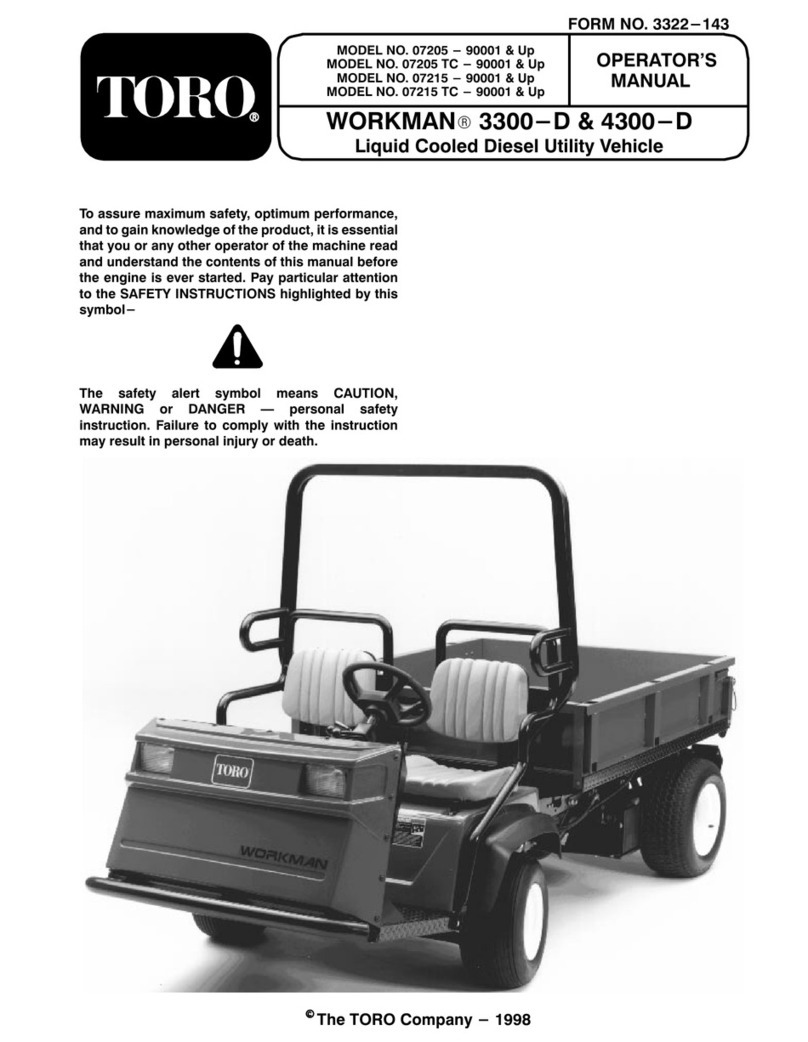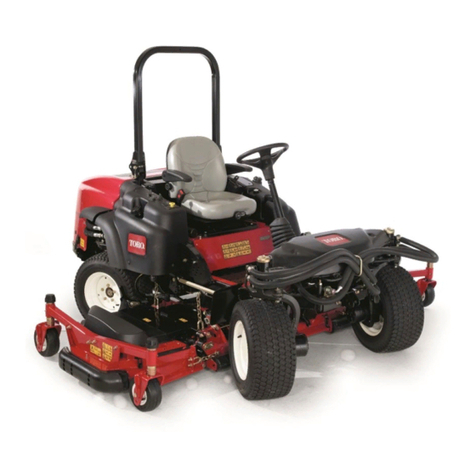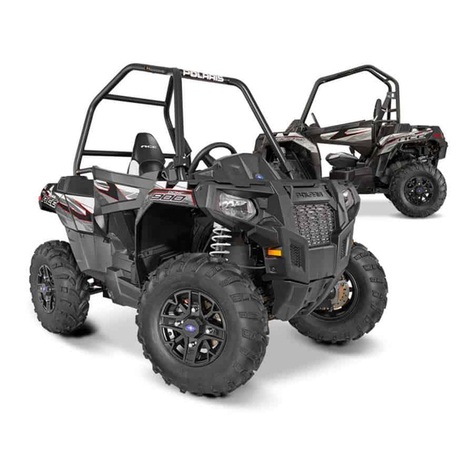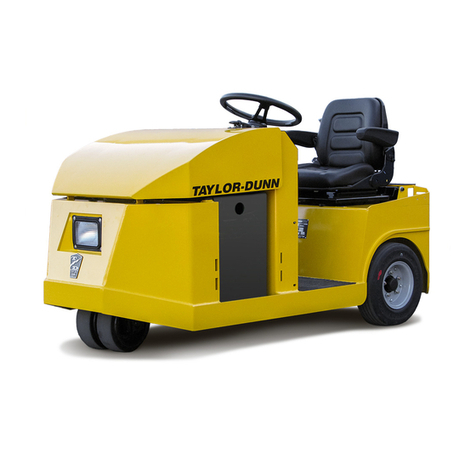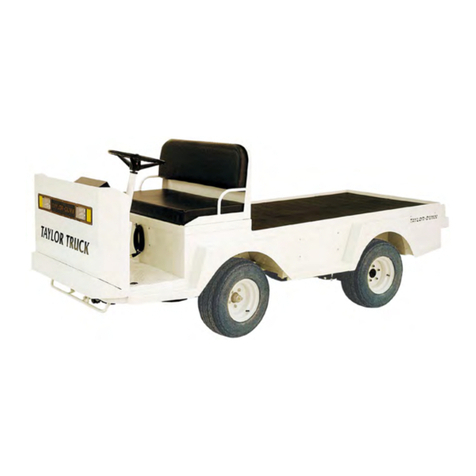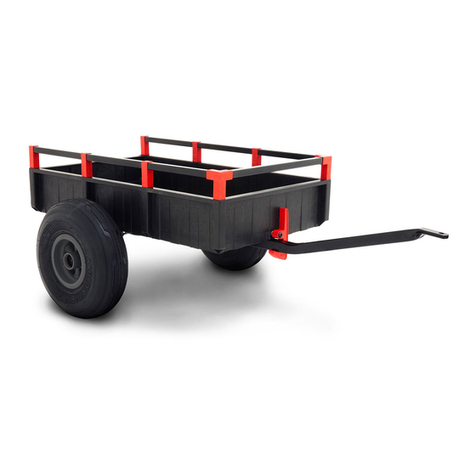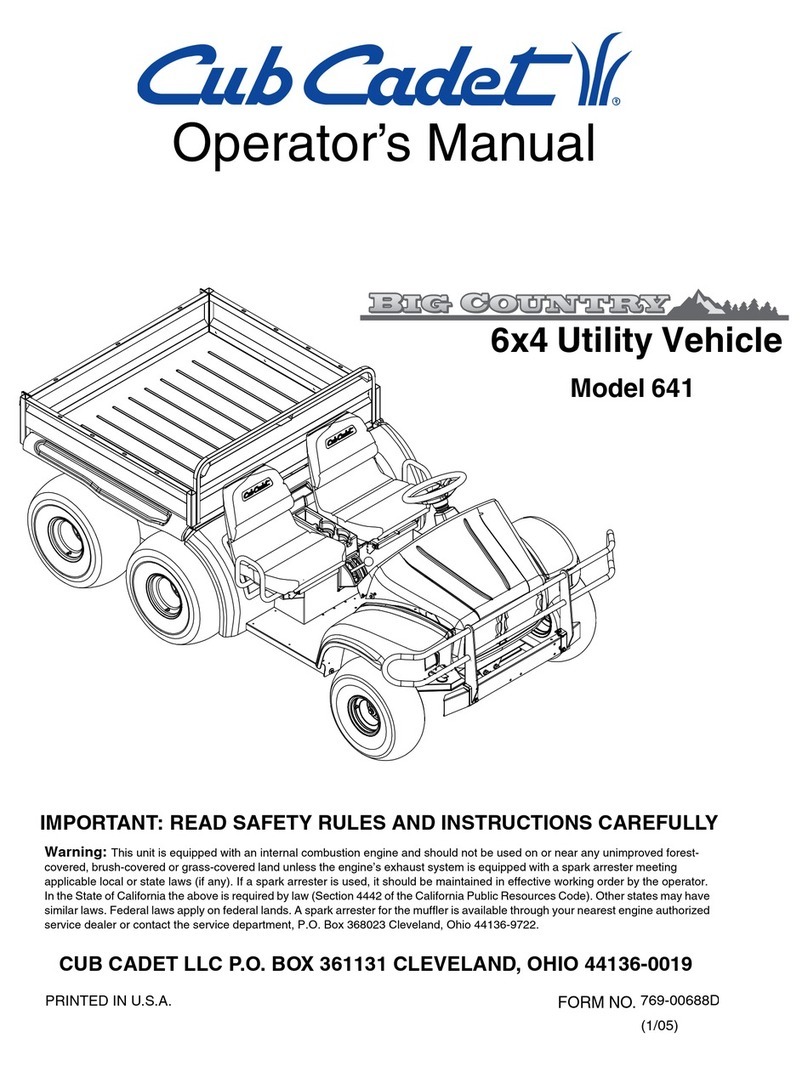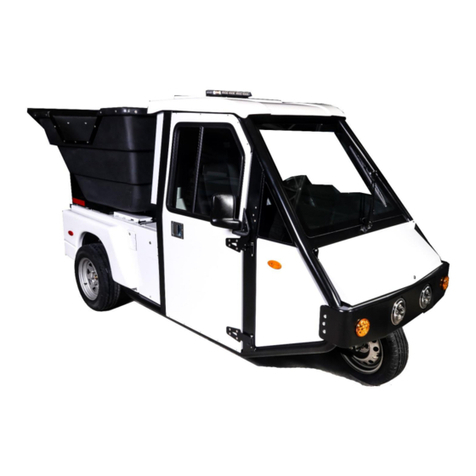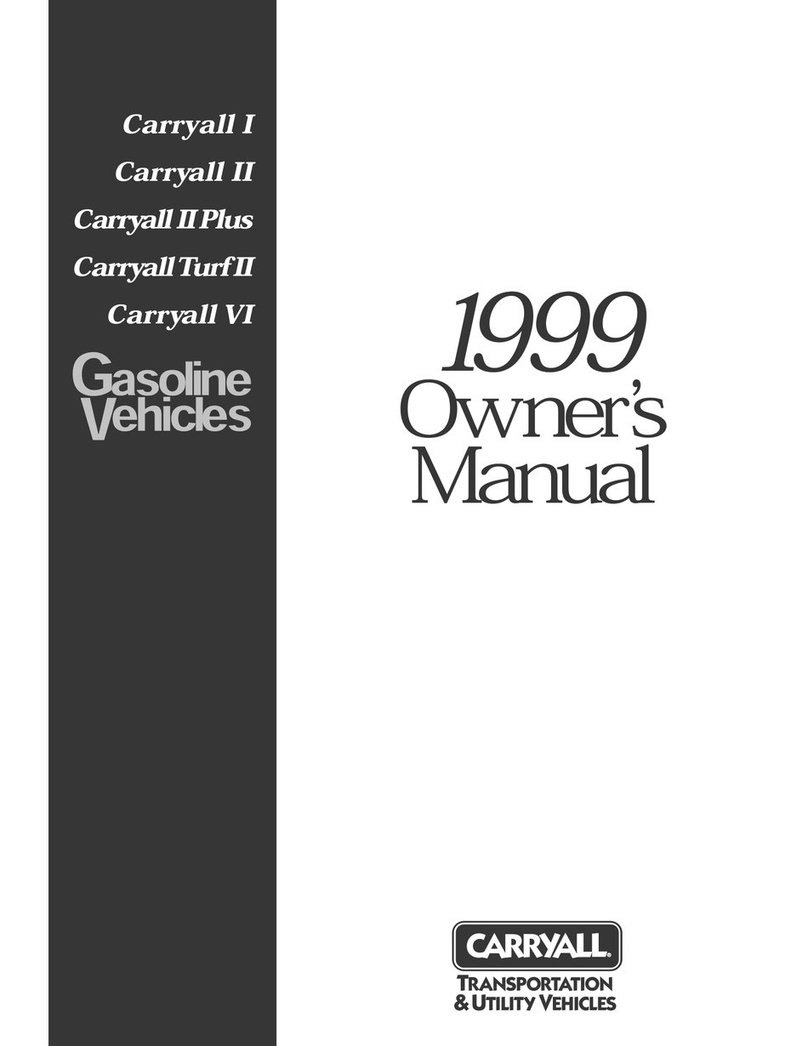C. Do not smoke while handling fuel.
D. Fill fuel tank outdoors and to about one inch
below top of tank (bottom of filler neck). Do
not overfill.
E. Wipe up any spilled fuel.
14. Check the safety interlock system daily for proper
operation; refer to page 27. If a switch should
malfunction, replace the switch before operating
machine. After every two years, replace the
interlock switches in the safety system, whether
they are working properly or not.
While Operating
15. Operator and passenger should remain seated
whenever the vehicle is in motion. Operator
should keep both hands on steering wheel,
whenever possible and passenger should use hand
holds provided. Keep arms and legs within the
vehicle body at all times. Never carry passengers
in box or on attachments. Remember your
passenger may not be expecting you to brake or
turn and may not be ready.
16. Never overload your vehicle. Name plate (located
under dash on passenger side) shows load limits
for vehicle. Never overfill attachments or exceed
the vehicle maximum gross vehicle weight.
17. When starting the engine:
A. Sit on operator’s seat and engage parking
brake.
B. Disengage any attachments and return hand
throttle lever to OFF position (if so
equipped).
C. Move shift lever to NEUTRAL and depress
clutch pedal.
D. Keep foot off accelerator pedal.
E.. Turn ignition key to START.
18. Using the machine demands attention. Failure to
operate vehicle safely may result in a accident, tip
over of vehicle and serious injury or death. Drive
carefully. To prevent tipping or loss of control:
A. Use extreme caution, reduce speed and
maintain a safe distance around sand traps,
ditches, creeks, ramps, any unfamiliar areas
or other hazards.
B. Watch for holes or other hidden hazards.
C. Use caution when operating vehicle on a
steep slope. Normally travel straight up and
down slopes. Reduce speed when making
sharp turns or when turning on hillsides.
Avoid turning on hillsides whenever
possible.
D. Use extra caution when operating vehicle on
wet surfaces, at higher speeds or with a full
load. Stopping time will increase with a full
load. Shift into a lower gear before starting
up or down a hill.
E. When loading bed, distribute load evenly.
Use extra caution if the load exceeds the
dimensions of the vehicle/bed. Operate
vehicle with extra caution when handling
off-center loads that cannot be centered.
Keep loads balanced and secure to prevent
them from shifting.
F. Avoid sudden stops and starts. Do not go
from reverse to forward or forward to reverse
without first coming to a complete stop.
G. Do not attempt sharp turns or abrupt
maneuvers or other unsafe driving actions
that may cause a loss of vehicle control.
H. When dumping, do not let anyone stand
behind vehicle and do not dump load on any
one’s feet. Release tailgate latches from side
of box, not from behind.
I. Before backing up, look to the rear and
assure no one is behind. Back up slowly.
J. Watch out for traffic when near or crossing
roads. Always yield the right of way to
pedestrians and other vehicles. This vehicle
is not designed for use on streets or
highways. Always signal your turns or stop
early enough so other persons know what
you plan to do. Obey all traffic rules and
regulations.
K. Never operate vehicle in or near an area
where there is dust or fumes in the air which
are explosive. The electrical and exhaust
systems of the vehicle can produce sparks
capable of igniting explosive materials.
L. Always watch out for and avoid low over
hangs such as tree limbs, door jambs, over
head walkways, etc. Make sure there is
enough room over head to easily clear the
5
